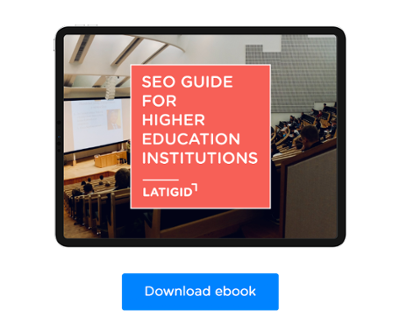
Inbound marketing for higher education institutions has emerged as a pivotal strategy to attract, engage, and enroll prospective students. In this article, we will explore five highly effective strategies tailored specifically for higher education.
Understanding the Importance of Inbound Marketing for Higher Education
Inbound marketing has gained significant importance across various industries, including higher education. It is a customer-centric approach that focuses on attracting, engaging, and delighting potential students and other stakeholders through valuable content and interactions. In the context of higher education, inbound marketing plays a crucial role in achieving enrollment goals, building a strong brand presence, and fostering lasting relationships with students, parents, and alumni.
Inbound marketing is not merely a trend but a necessary strategy for higher education institutions to thrive in today's competitive landscape. It aligns with the preferences and behaviors of modern students, fosters trust and credibility, and enables personalized engagement. By adopting inbound marketing, universities and colleges can better connect with prospective students, provide valuable information, and build lasting relationships that extend throughout their educational journey.
Related article: Attract, Engage, Convert: Inbound Marketing Tactics for Universities
Strategy 1: Compelling Content Creation
Inbound marketing for higher education hinges on the creation of compelling content that resonates with prospective students. This strategy recognizes that content is the cornerstone of engaging and attracting the modern student audience.
Compelling content starts with relevance and value. Institutions must identify the information that prospective students are seeking and provide it in a format that's easy to digest. This can include informative blog posts, engaging videos, insightful webinars, and downloadable resources.
Understanding the preferences of your target audience is crucial. Explore the kinds of content that resonates best with prospective students. Consider topics like program overviews, campus tours, student testimonials, and career prospects. Tailoring content to their interests helps establish a stronger connection.
Creating content is one thing; making it engaging is another. Effective storytelling, visuals, and interactivity is key. Learn how to craft blog posts that answer questions and solve problems, produce videos that captivate and educate, and host webinars that provide valuable insights. These formats can be powerful tools for student engagement.
Strategy 2: Search Engine Optimization (SEO) for Higher Education
Inbound marketing for higher education isn't complete without a strong focus on Search Engine Optimization (SEO). SEO is the key to ensuring that your institution's offerings are easily discoverable when potential students search online.
The foundation of SEO is to enhance the online visibility of your institution. This involves optimizing your website and content to rank higher in search engine results pages (SERPs). Higher rankings mean more organic traffic and greater exposure to potential students.
Keyword research is essential for understanding what terms and phrases potential students use when searching for educational opportunities. Integrating these keywords into your website content, including blog posts, program descriptions, and landing pages, is crucial for SEO success.
On-page SEO includes optimizing elements directly on your website, such as meta tags, headers, and content structure. Off-page SEO involves activities like link-building, social media engagement, and online reputation management. Combining both on-page and off-page strategies is essential for a well-rounded SEO approach.
Strategy 3: Social Media Engagement
In today's digital age, social media engagement is a critical component of inbound marketing for higher education. It allows institutions to connect with their target audience, build brand awareness, and foster meaningful relationships with prospective students.
Higher education institutions should identify the social media platforms that their target audience frequents the most. Whether it's Facebook, Instagram, Twitter, LinkedIn, or newer platforms like TikTok, being present where prospective students spend their time is essential.
Each social media platform has its unique audience and content style. Tailor your content to align with the platform's strengths. For instance, use visually appealing images and short videos on Instagram, while LinkedIn might be more suitable for sharing professional insights and updates.
Consistency is key to maintaining an active social media presence. Develop a content calendar and posting schedule that ensures regular updates. Engage with your audience by responding to comments, conducting polls, and running contests to encourage participation.
Track the performance of your social media efforts using metrics like engagement rate, reach, and conversion. Use these insights to refine your strategy over time, focusing on what resonates most with your audience.
Strategy 4: Email Campaigns for Student Nurturing
Email marketing remains a highly effective strategy in the realm of inbound marketing for higher education. It allows institutions to maintain consistent communication with prospective students, nurture leads, and provide valuable information at every stage of their journey.
Effective email campaigns in higher education begin with a well-thought-out strategy. This includes defining campaign objectives, target audiences, and the type of content to be delivered. Campaigns should align with the student's lifecycle, from initial inquiry to enrollment and beyond.
One-size-fits-all email marketing no longer suffices. Segment your email lists based on factors like academic interests, location, and where the prospect is in their decision-making process. Personalize email content to speak directly to each group's needs and interests.
Automation tools enable institutions to send timely, relevant emails without manual intervention. Drip campaigns, in particular, can be highly effective. These are sequences of emails sent automatically based on triggers like signing up for a newsletter or downloading a resource. Drip campaigns keep prospects engaged over time.
Track key metrics like open rates, click-through rates, and conversion rates to measure the effectiveness of your email campaigns. Analyze the data to identify what works and what needs improvement and make data-driven adjustments to optimize your email strategy.
Strategy 5: Conversion-Focused Landing Pages
Inbound marketing for higher education often revolves around the creation of compelling landing pages designed to convert visitors into prospective students. These pages are essential for driving action and achieving specific goals, such as gathering inquiries, applications, or event registrations.
Effective landing pages are well-designed and optimized for conversion. They have a clear and concise layout, persuasive copy, and a compelling call-to-action (CTA). The design should be user-friendly and mobile-responsive to cater to a wide range of devices.
The process doesn't end with the creation of landing pages. A/B testing involves creating two versions of a landing page with slight variations and then monitoring which one performs better. This iterative approach helps refine landing pages over time to maximize conversions.
By focusing on conversion-focused landing pages, higher education institutions can optimize their lead generation efforts, gather valuable student information, and guide prospects seamlessly through the enrollment process.
Related article: Inbound Marketing for Higher Education: A Student-Centric Approach
About LATIGID
We are a Higher Education Marketing Agency, specialized in Inbound Marketing. We help you grow by increasing website traffic, generating more student leads and closing those leads into enrollment. With a deep understanding of the latest industry trends and best practices, we are well equipped to help your institution grow.
If you are looking for a Higher Education Marketing Agency to partner with, check our page to see what we can do for you!
Download our SEO guide and learn how to build a strategy to optimize your Higher Education Institution's website




